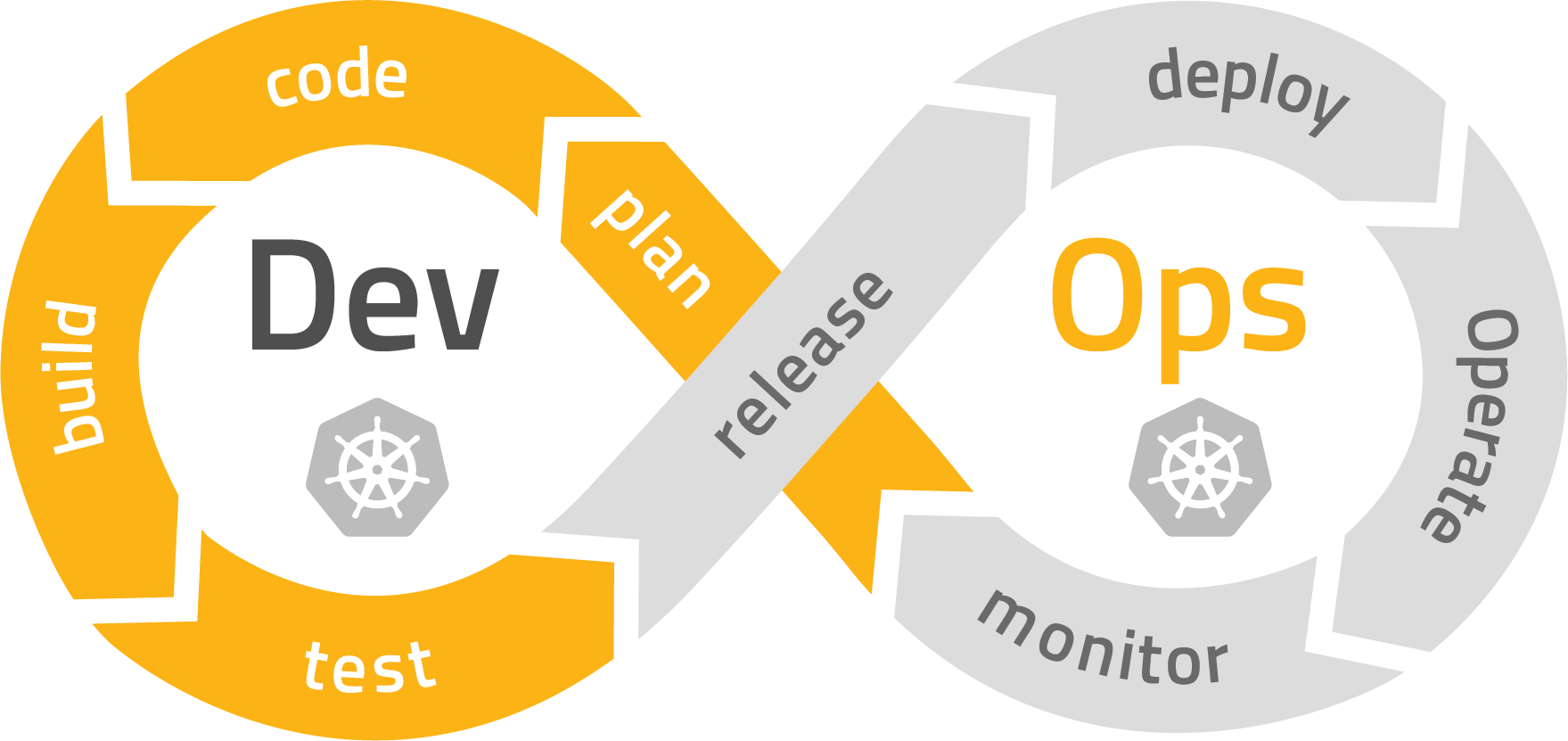What is DevOps?
DevOps is a methodology that allows development and IT teams to work on smaller software functionalities from start (development) to finish (operations). The goal is to increase ownership over code, reduce handoffs and risk, and push out updates quickly; speeding up the innovation process.
DevOps is closely related to Agile but applies its principles beyond the software team.
DevOps allows new code to be built, tested, and deployed seamlessly—which usually means quickly and without introducing new errors at the deployment stage. More specifically, DevOps objectives can be summarized as:
- Improved deployment frequency
- Faster time to market
- Lower failure rate of new releases
- Shortened lead time between fixes
- Faster mean time to recovery (in the event of a new release crashing or otherwise disabling the current system)
Achieving each of these goals has a measurable business impact in the modern enterprise, including higher customer satisfaction, increased revenues, and competitive advantage.

What are DevOps practices?
DevOps practices combine to ensure the seamless and continuous delivery of applications and software products. These practices incorporate automated workflows—such as testing, continuous integration (CI), and continuous deployment (CD) to streamline the release of code. Let’s look at each practice:
- Well-defined Agile development processes and methods
- Virtualized and cloud infrastructure
- Increased use of infrastructure automation and configuration management tools
- Version control for development artifacts—This allows developers to work on individual tasks independently, efficiently manage changes introduced by developers, and attend to multiple versions of the software simultaneously.
- Storing configuration and other artifacts in the version control system together with the code—This is also known as “Infrastructure as Code” or “… as Code.” This approach allows for expanded version management and releases management practices from application build and deployment to other areas.
- Automated testing—This allows developers to test pieces of code immediately while receiving instant feedback. If a piece of code has an error, then the developer can fix it on the spot.
- Continuous integration (CI)—Code is integrated together through the version control “master branch.” To achieve this, each line of code must be worked on then automatically tested. After the test comes back clear, the code is ready to be sent to the master branch. Once all the code is committed within the master branch, then it prepares for deployment.
- Continuous delivery (CD)—CD’s goal is to automatically push the code into production once it passes all testing. If an error occurs, then feedback will be received instantly.
- On-demand environments—Instead of waiting a long time to receive a testing environment from the operations team (how it was done previously), now developers have access to production-like environments as they need them.
How do you implement DevOps?
To implement DevOps as part of any digital transformation strategy, you must look beyond technology considerations and review wider business goals and the human element—including customers, end-users, as well as internal teams. Here are nine steps to consider in your DevOps implementation strategy.
- Formulate and evaluate your organization’s business goals and identify the business goals that will drive DevOps practice implementation—DevOps should not be implemented out of fashion or because it is the latest trend, but based on the business goals that demand changes in the development process.
- Focus on customer / end-user needs—Ensure that every step in a process and every DevOps practice places end-users’ needs in the center and measures success based on it.
- Encourage collaboration between groups—Development, testing, QA, operations, security, and other teams should communicate and collaborate on software delivery.
- Start small and scale up—Implement the DevOps approach in a new or PoC project. Try and test technologies at a small scale and gradually apply the acquired knowledge and expertise in larger and existing projects.
- Automate, whenever possible—Automation reduces human errors, enables faster execution, and it is in the core of DevOps practices. Plan for automating everything that can be automated.
- Build CI/CD stack with compatible tools—The automation tools used in DevOps may react differently with other tools. Start with a proof of concept implementation and choose a toolset compatible with your IT environment and existing tool chain. A best practice and important starting point is to select tools from a single vendor.
- Ensure the project observability—As the saying goes, it does not exist if it cannot be measured. It may not be a universal truth, but it is certainly very applicable to software engineering. Ensure that key metrics are collected, stored, and available for review and analysis throughout the stack. This relates to all levels of the systems and the organization - from technical microservices performance metrics to organization development and operation (DevOps) processes metrics.
- Enable feedback with teams and individuals performance reviews—Observability in the project enables improvements. Team and individual performance reviews provide useful feedback and improve information flow in both directions. Performance reviews for developers and operations teams should mostly be based on their teams’ ability to meet their development and deployment goals.
- Implement continuous integration and delivery—The logical expansion of the “automate everything” principle is CI/CD. CI enables developers to build software in small, regular steps by immediately detecting defects and providing feedback. CD is an extension of CI. CD ensures that any required changes are rapidly and safely deployed to production. CD delivers code changes into a staging (production-like) environment and applies rigorous testing.
Stay tuned for more in this series on DevOps. In our next post, we’ll dive into frequently asked questions about DevOps, Agile, DevSecOps, DataOps, CI/CD, and more!